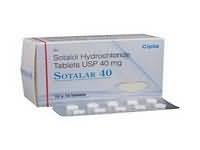nevirapine

CLINICAL USE
Non-nucleoside reverse transcriptase inhibitor:Treatment of progressive or advanced HIV infection in combination with at least two other antivirals
DOSE IN NORMAL RENAL FUNCTION
200 mg daily, increasing to twice daily after 14 days if tolerated
PHARMACOKINETICS
Molecular weight :266.3 %Protein binding :60 %Excreted unchanged in urine : <3 Volume of distribution (L/kg) :1.12–1.3half-life – normal/ESRD (hrs) :45 (single dose) 25–30 (multiple dosing)/Unchanged DOSE IN RENAL IMPAIRMENT
GFR (mL/MIN)
20 to 50 : Dose as in normal renal function 10 to 20 : Dose as in normal renal function <10 : Dose as in normal renal function. See ‘Other Information’ DOSE IN PATIENTS UNDERGOING RENAL REPLACEMENT THERAPIES
CAPD :Dialysed. Dose as in GFR <10 : mL/min HD :Dialysed. Dose as in GFR <10 : mL/minHDF/high flux :Dialysed. Dose as in GFR <10 : mL/minCAV/VVHD :Unknown dialysability. Dose as in normal renal function IMPORTANT DRUG INTERACTIONS
Potentially hazardous interactions with other drugsAntibacterials: concentration decreased by rifampicin – avoid concomitant use; possibly increased rifabutin concentrationAnticoagulants: may increase or reduce effect of warfarinAntidepressants: concentration reduced by St John’s wort – avoid concomitant use Antifungals: concentration of ketoconazole reduced – avoid concomitant use; concentration increased by fluconazole; possibly reduced caspofungin concentration – may need to increase caspofungin doseAntipsychotics: possibly reduced aripiprazole concentration – increase aripiprazole doseAntivirals: concentration of indinavir and efavirenz reduced and possibly amprenavir, lopinavir and atazanavir – avoid concomitant use with atazanavirOestrogens and progestogens: accelerated metabolism (reduced contraceptive effect) ADMINISTRATION
Reconstition
– Route
Oral Rate of Administration
–Comments
– OTHER INFORMATION
Little data available on the use of nevirapine in renal failure, but need for dose adjustment is unlikely due to nevirapine being predominantly metabolised in the liver, and the inactive metabolites excreted in the urine. Use with cautionThere was a preliminary study of haemodialysis patients which showed that a normal dose was not associated with increased side effects.
See how to identify renal failure stages according to GFR calculation
See how to diagnose irreversible renal disease
Home









